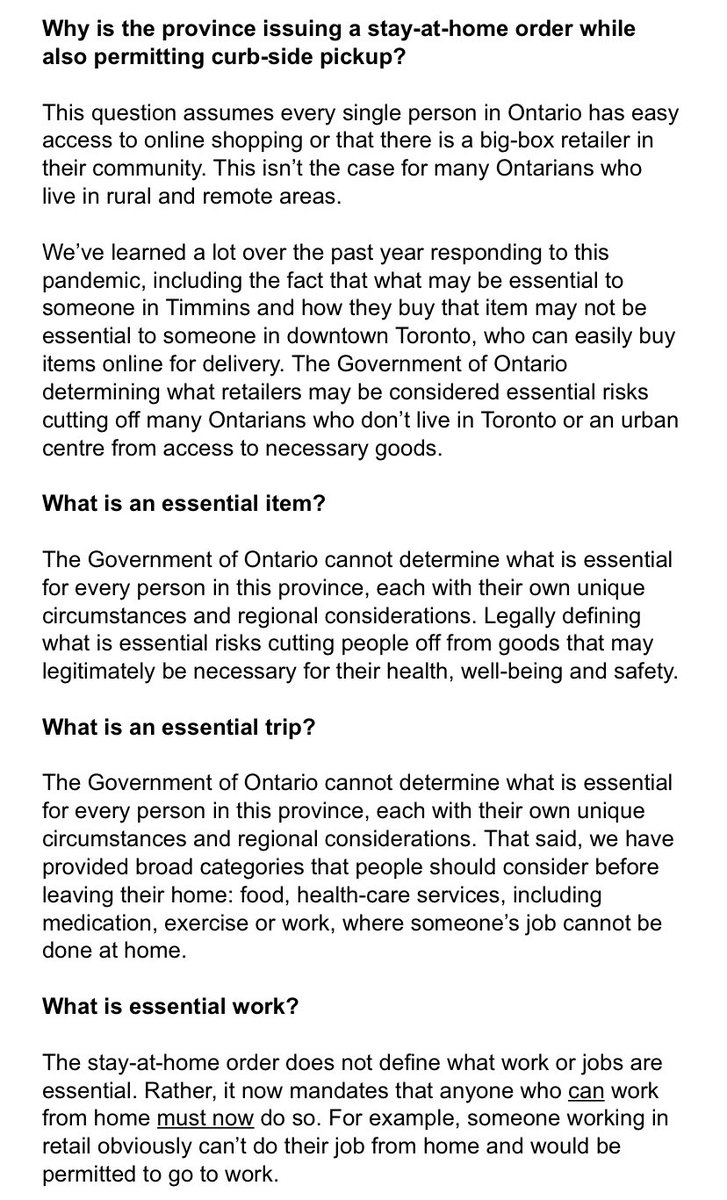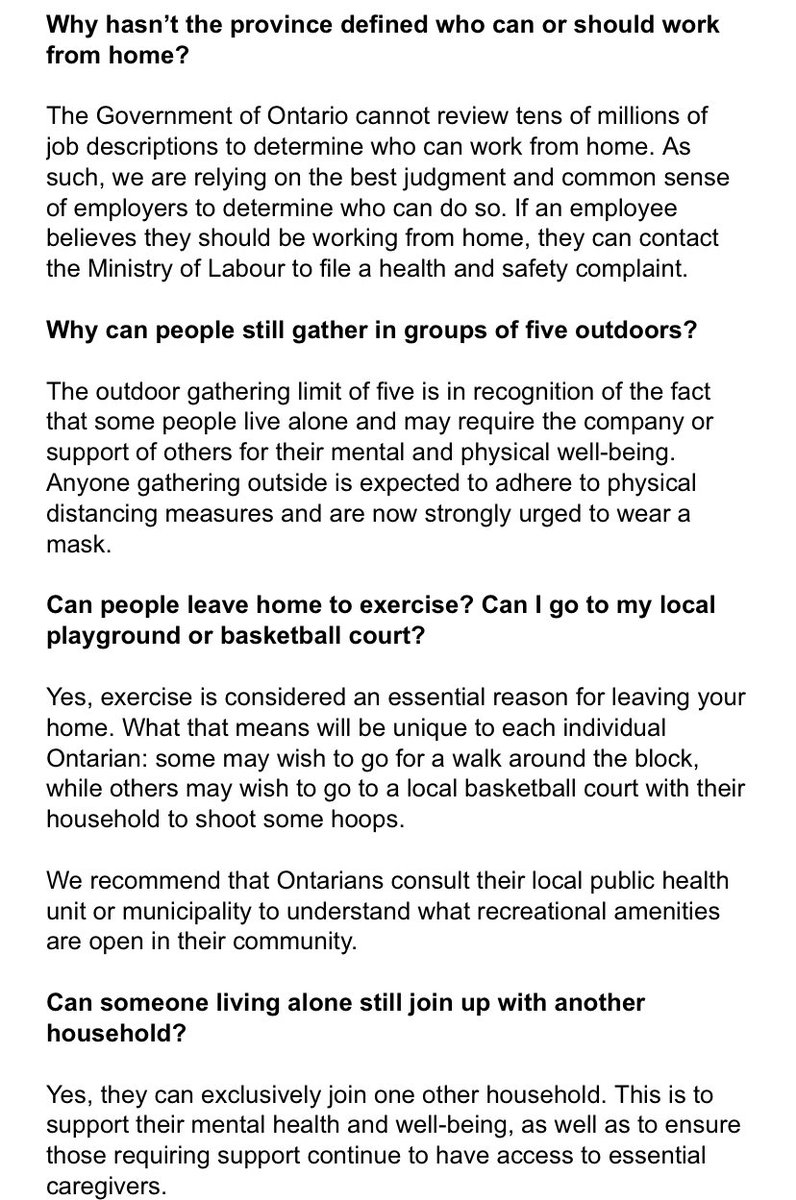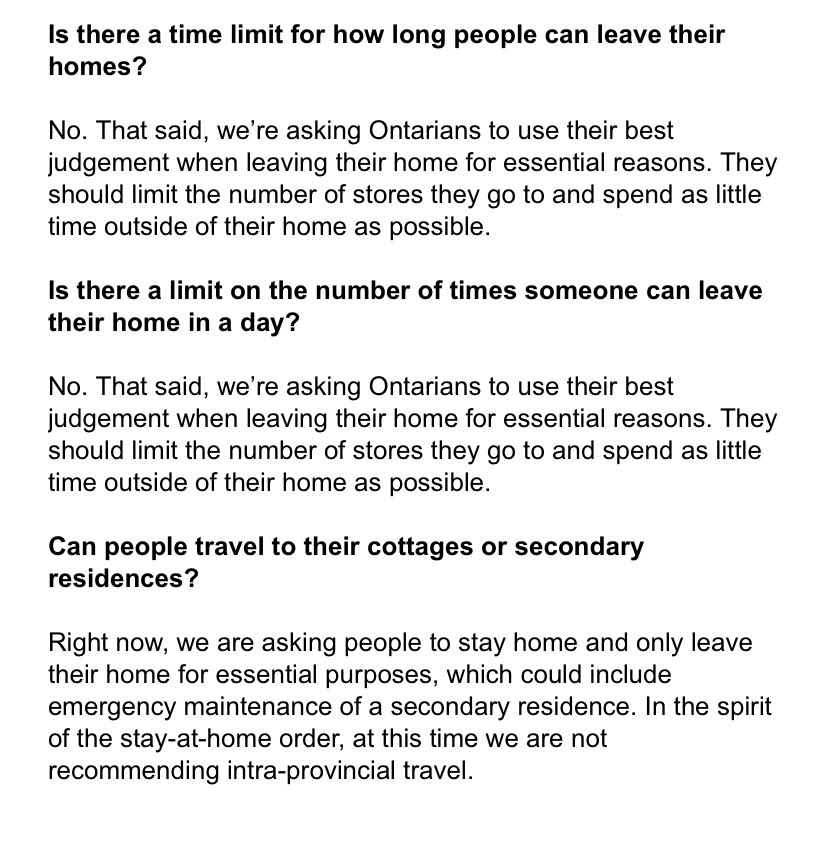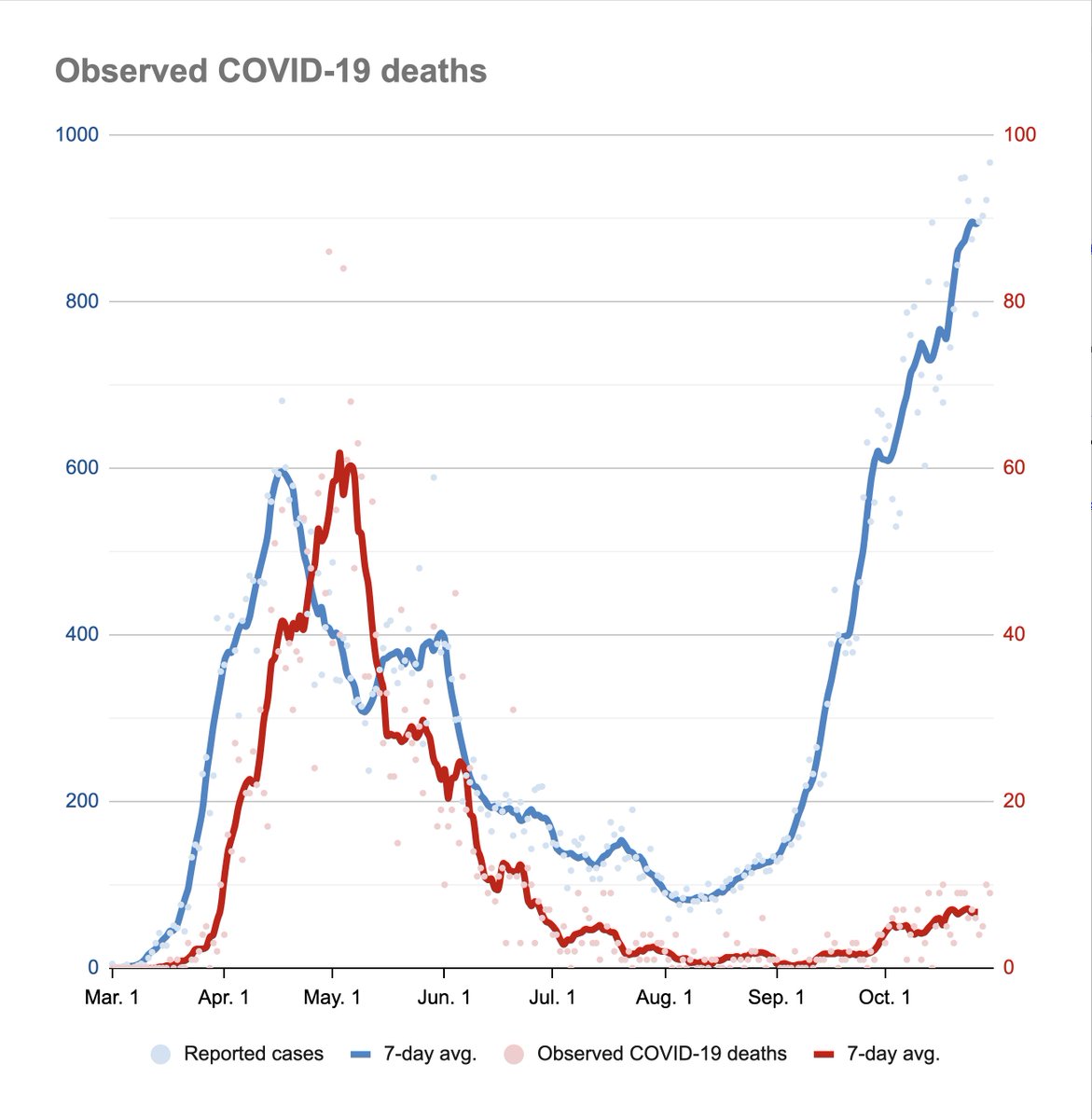
Here's a fun game: The blue line here is Ontario's 7-day avg. of reported COVID-19 cases.
After March 2020, where on this is line is the growth the fastest?
After March 2020, where on this is line is the growth the fastest?

(I'll reply with the answer in the morning.)
The answer: A roughly 10-day period in early-to-mid Sept., when Ontario had a ~9 day doubling time, easily seen here using a log-scale.
Side note: The end of this period of growth roughly coincides with the first major intervention of Wave 2 — closing bars early.
Side note: The end of this period of growth roughly coincides with the first major intervention of Wave 2 — closing bars early.

• • •
Missing some Tweet in this thread? You can try to
force a refresh













